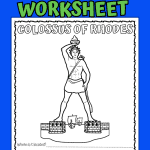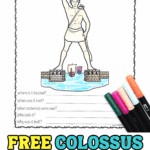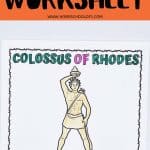Colossus of Rhodes Worksheet & Fun Facts for Kids
A Colossus of Rhodes worksheet is a great way to introduce kids to one of the most fascinating wonders of the ancient world.
This free geography printable explores the massive bronze statue that once stood in the harbor of Rhodes, honoring the sun god Helios and symbolizing strength and unity.
With simple facts, engaging questions, and hands-on learning, it’s a fun way to combine history, geography, and mythology in one lesson.
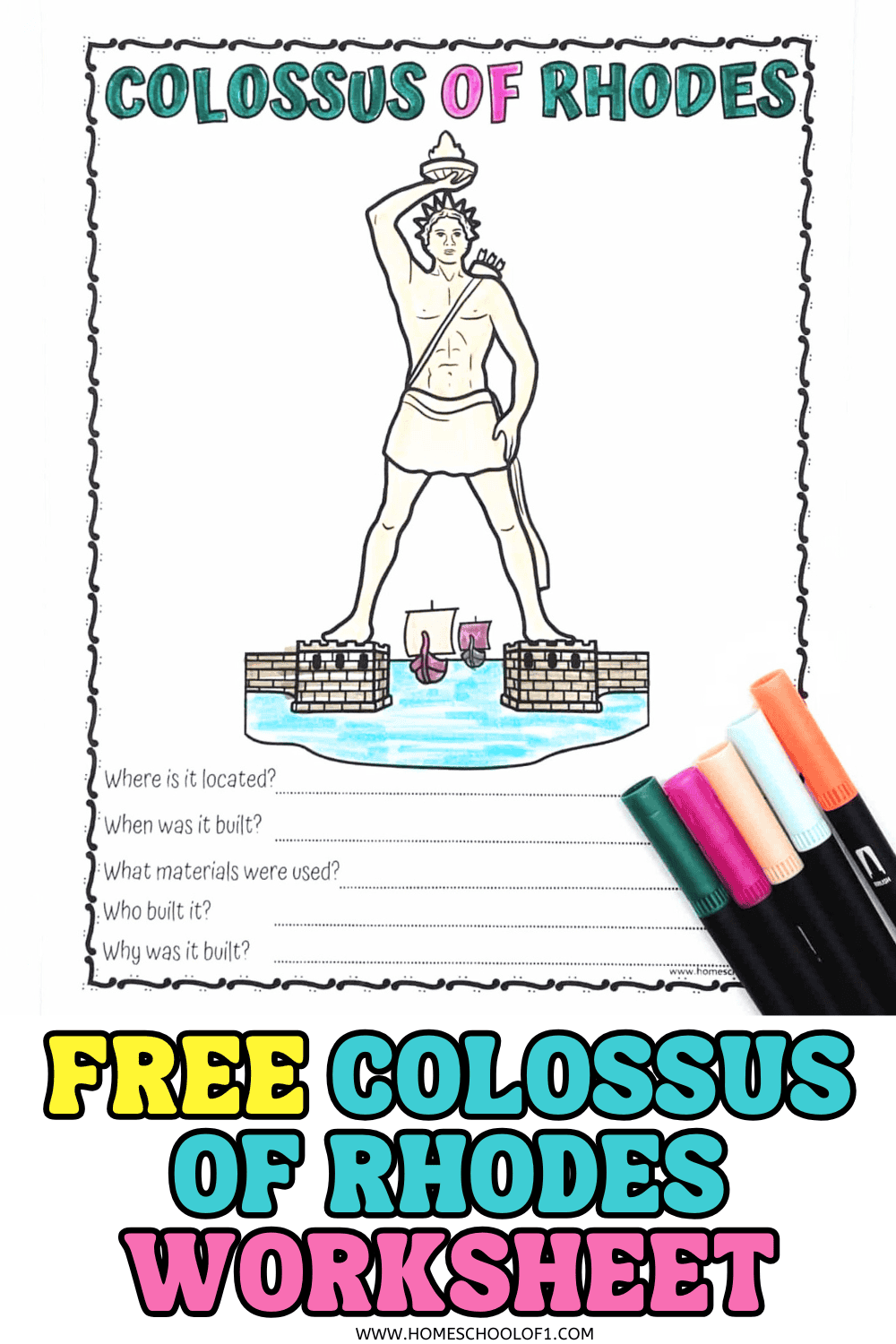
**This post may contain affiliate links. As an Amazon Associate and a participant in other affiliate programs, I earn a commission on qualifying purchases.**
Interesting Colossus of Rhodes facts for kids
- The Colossus of Rhodes was a gigantic statue of the Greek god Helios. Also known as the Sun God. It was one of the Seven Wonders of the Ancient World.
- The statue was built on the island of Rhodes in Greece around 280 BC. It was constructed to celebrate the victory of Rhodes over an enemy army.
- The Colossus of Rhodes was made entirely of bronze, a metal alloy composed mainly of copper. It stood approximately 98 feet (30 meters) tall, which is about as high as a 10-story building.
- The statue was created by the Greek sculptor Chares of Lindos. It took him and his team of workers 12 years to complete.
- The Colossus of Rhodes stood at the entrance of the harbor. With its legs on either side of the harbor mouth, allowing ships to pass underneath.
- The statue was known for its impressive height and grandeur. It was said to have been visible from far away, guiding ships into the harbor.
- Unfortunately, the Colossus of Rhodes stood for only a relatively short time. It was destroyed in an earthquake in 226 BC, which caused it to collapse.
- After its collapse, the statue lay on the ground for nearly 900 years. Many people visited the ruins to see the fallen Colossus.
- The remains of the statue were eventually sold as scrap metal in the 7th century AD by invading Arab forces. It is said that it took 900 camels to carry away all the pieces.
Explore more with our free continent of Europe worksheets — a great next step for learning about ancient Greece and its place in world geography.
Colossus of Rhodes research
The Colossus of Rhodes was more than just a statue — it was a symbol of strength, skill, and ancient Greek culture.
As kids work through this part of the Colossus of Rhodes worksheet, they’ll explore key facts and answer questions that bring this ancient wonder to life.
Here’s what they’ll be asked to research and reflect on:
Where was it located?
The Colossus of Rhodes was located on the island of Rhodes, Greece. It stood at the entrance of the harbor.
When was it built?
The Colossus of Rhodes was built around 280 BC.
What materials were used in making it?
The statue was made primarily of bronze, which is an alloy of copper. However, it is worth noting that there is some debate among historians regarding the exact materials used.
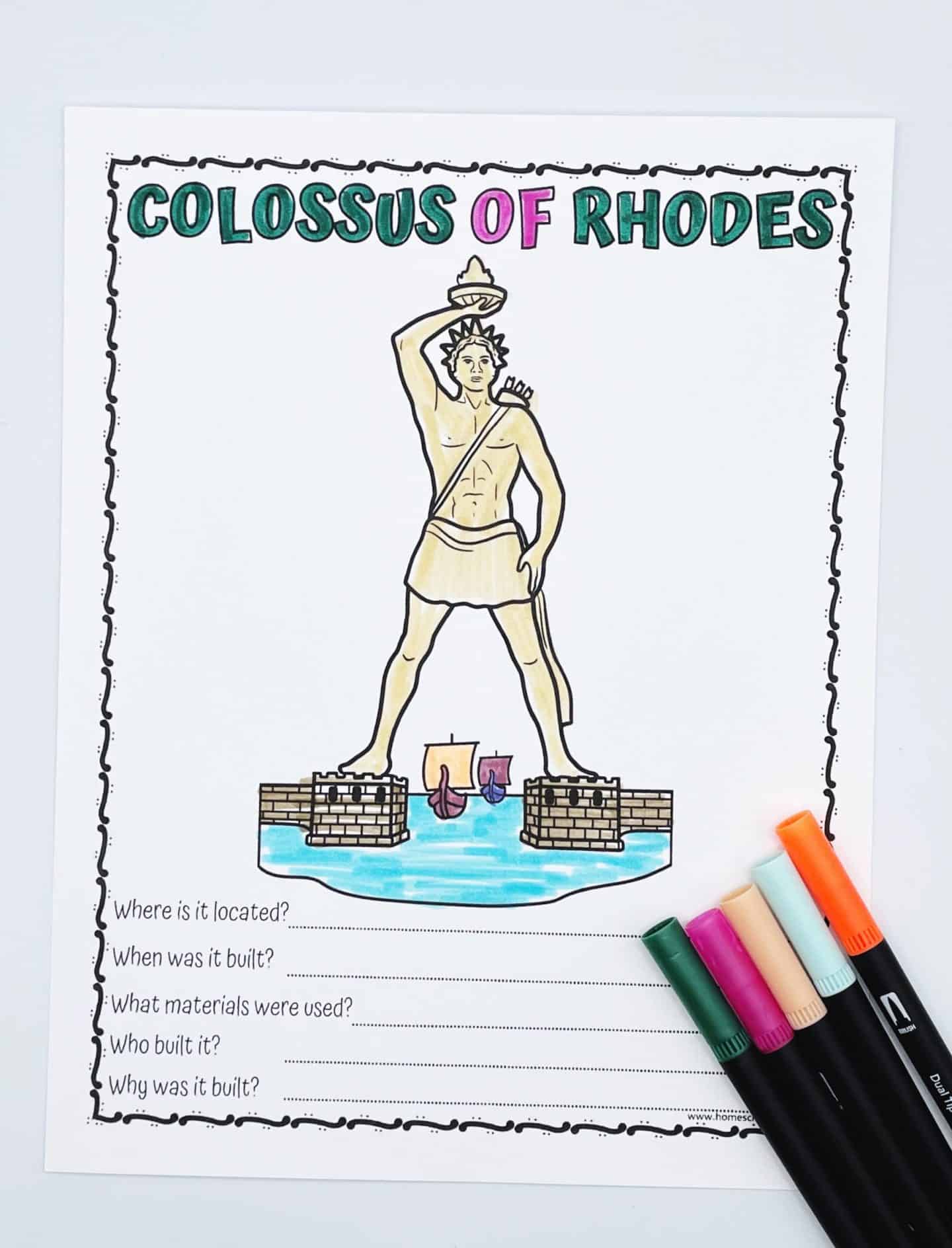
Who built it?
The Colossus of Rhodes was built by the Greek sculptor Chares of Lindos. He led a team of workers who constructed the statue.
Why was it built?
The Colossus of Rhodes was built to celebrate the victory of Rhodes over an enemy army. It served as a symbol of the city’s power and as a dedication to the Greek god Helios, also known as the Sun God.
What happened to the Colossus of Rhodes?
The Colossus of Rhodes, one of the Seven Wonders of the Ancient World, met a tragic fate. Here’s what happened to the Colossus:
- In 226 BC, a powerful earthquake struck the island of Rhodes. This earthquake, estimated to be around magnitude 7.0 to 7.5, caused significant damage to the island and led to the downfall of the Colossus. The statue collapsed and was left in ruins.
- After the earthquake, the fallen remains of the Colossus of Rhodes lay on the ground for nearly 900 years. Many people visited the ruins to witness the colossal fallen statue.
- In the 7th century AD, during the Arab invasion of Rhodes, the remains of the Colossus were sold as scrap metal. It is said that the broken pieces were transported away from the island on the backs of 900 camels.
- The dispersed fragments of the statue were eventually melted down and repurposed, losing their identity as parts of the Colossus of Rhodes. The bronze material was valuable, and it was likely reused for various other purposes.
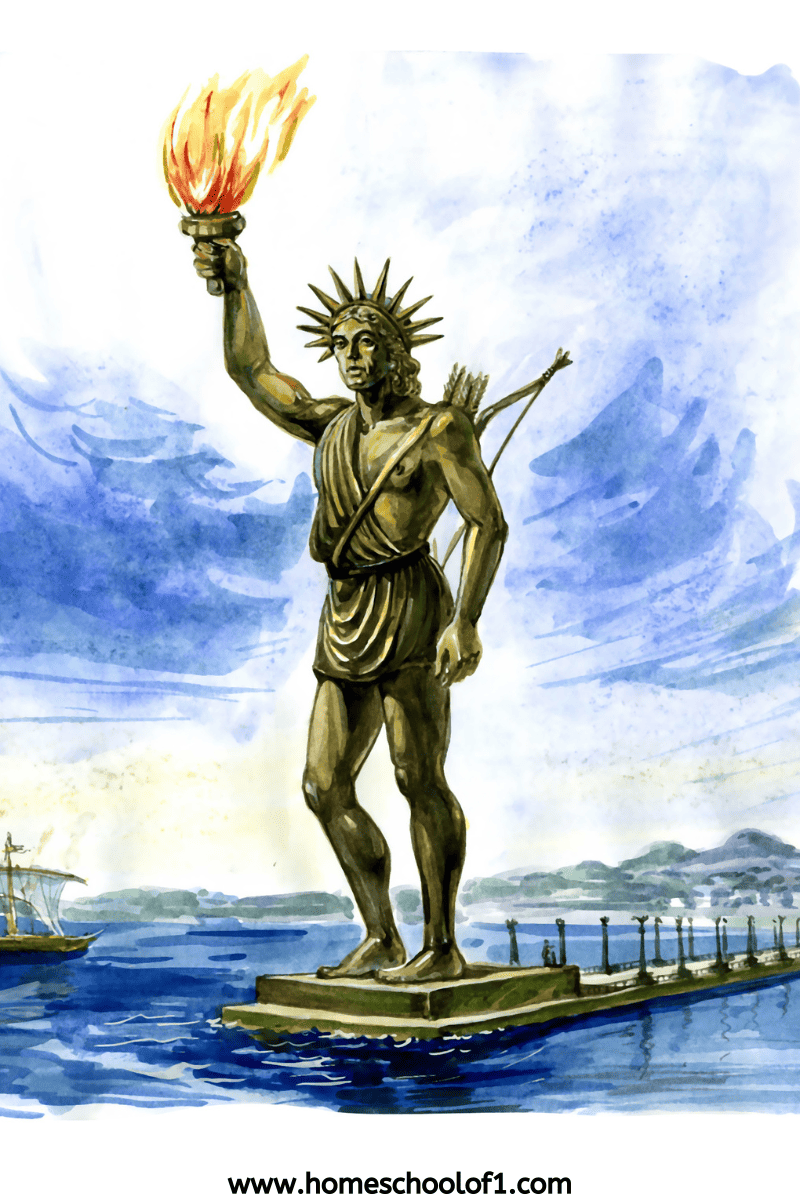
Due to the destruction and dispersal of the statue, no significant remnants or recognizable parts of the Colossus of Rhodes have survived to the present day.
Only historical accounts, artistic depictions, and descriptions passed down through generations provide insight into the appearance and significance of this once-magnificent statue.
You will also enjoy our Greek mythology coloring pages.
Get your free Colossus of Rhodes worksheet here!
If you’re exploring the wonders of the world, you can get all 14 worksheets — covering both ancient and modern wonders — in one easy-to-use bundle for a small fee.
If you don’t see the form below, click here to get the free Colossus of Rhodes coloring page.
Additional wonders of the world worksheets
Last Updated on 23 October 2025 by Clare Brown

